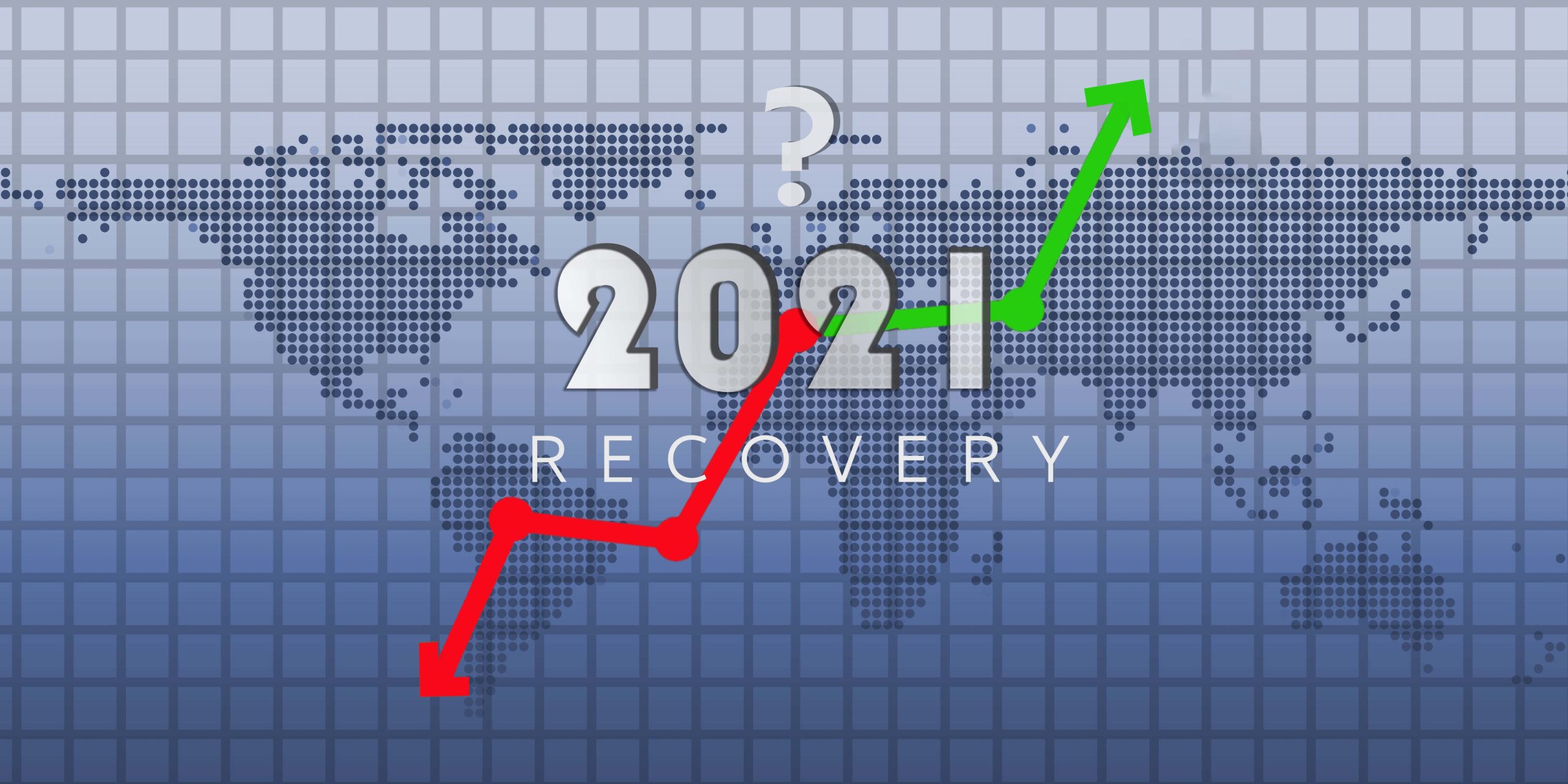The overarching trend over the next decades is an expanded role of governments. The Covid-19 response and recovery have necessitated larger government expenditure, both on healthcare response and in supporting households and businesses through the crisis. Furthermore, recovery packages involve long-term green energy policies, digitalization, education, and R&D in medicine and technology. These, in turn, require significant government investment. So does the redeployment of workers from sectors severely affected by the pandemic to emerging sectors.
In 1932 John Maynard Keynes – the most-famous economist at the time – wrote an essay entitled Economic Possibilities for our Grandchildren. The Great Depression was raging, just as the Covid-19 pandemic is now, and Keynes was worried about technological unemployment —unemployment due to the discovery of means of economizing labor through the use of new technology. This fear is alive now, too, as shoppers go massively online and shopping malls are going bankrupt, and cruise ships stay idle for months on end.
Not all that comes from crises is bad. In the same essay, Keynes also predicted that 100 years hence, by 2030, the standard of life in Western countries would approach eight times the level it was in 1930 (Keynes 1932). His prediction may come remarkably true. Between 1930 and 2019, the GDP per capita in the United States increased 6.7 times, and is on course to reach 7.5-8 by 2030, the pandemic notwithstanding. Keynes conjectured that this enormous increase in wealth would be brought about by new ways to do business and by the emergence of entirely new sectors (Djankov and Zhang 2021).
This essay tests Keynes’ prediction of the latest data on business formation in Western economies. It then describes some of the recovery initiatives underway and expand the state’s role through these initiatives. It concludes with several other areas where government involvement is likely to increase in the coming decades.
The emergence of new firms
The focus of Covid-19 recovery responses has been mostly on assisting existing businesses with weathering the crisis and saving jobs (Baldwin 2020). Less is done to help new companies and employment opportunities emerge. Yet, we know from Joseph Schumpeter (1934), that economic crises are periods of creative destruction, where new ideas and ways of doing things come to the fore.
Some of the new opportunities are just a different – technology-based – way to do the same business, just as Keynes predicted. Firms have invested in digital applications. Workers have learned how to use remote databases and reach their customers over social media. The office was becoming virtual even before the pandemic (Baldwin 2019) and may remain so post-Covid-19 in some economic sectors.
For example, in the United Kingdom, 20 percent of new businesses created in the third quarter of 2020 were in retail, which reflects an increase in online shopping during Covid-19. Besides retail, industries that are adaptable to remote work, such as back-office services, also took a larger share of business creations in 2020 than before.
There is also the possibility that entirely new sectors emerge after the pandemic (Javorcik 2020). These, in turn, may create new ways to do business with the public administration, simplifying the interactions between business and bureaucrats (Djankov et al. 2002). Helping these transitions is the governments’ next task in Covid-19 recovery.
Several governments have established programs to aid new business formation during the Covid-19 pandemic, none more extensive than the United States program. The US Small Business Administration provides Economic Injury Disaster Loans to start-ups. These loans do not require a personal guarantee from the owner and have extended repayment options. By the end of November 2020, 3.3 million loans under $50,000 were approved (Djankov and Zhang 2021).
The United Kingdom created the Coronavirus Future Fund for start-ups. The fund gives out loans ranging from £125,000 to £5 million, subject to equal match funding from private investors. Between its launch in May and October 2020, the program approved £800 million convertible loans to 745 companies. In Switzerland, a government scheme started in April 2020 has provided 360 loans for start-ups with 65 percent of a federal guarantee, while 35 percent is provided by the canton to jointly guarantee the full loan amount up to CHF 1 million ($1.1 million). In Chile, the Start-up Ciencia program has provided 90 new technology companies equity financing for up to 85 percent of overall equity, with a ceiling of 220 million pesos ($300,000).
Early results suggest that these star-tup-support programs may be working. The number of new business applications in the United States shot up by 27 percent in 2020 relative to the same period in 2019, before the Covid-19 pandemic struck. This is the largest increase of any OECD country with available data. Significant increases in entrepreneurship are also recorded in Turkey (23 percent), Chile (14 percent), and the United Kingdom (8.5 percent). Several other countries – Estonia, Switzerland, Australia, and the Netherlands – show modest increases in the number of start-ups (Djankov and Zhang 2021).
When Keynes was contemplating wealth creation over the long run, he probably did not have in mind a global pandemic that puts a temporary stop on many economic activities. He likely did not envisage the uncertainty that will remain in some sectors over the demand recovery for years to come. Still, his prediction may prove right in the post-Covid-19 period. New businesses may shepherd industries that become more efficient and create entirely new industries. Governments can ease their path.
Covid-19 recovery initiatives
Some examples from Covid-19 recovery initiatives, following on Djankov (2020), are pertinent here. Major industrial democracies in the Group of Seven (G7) bloc have had significant fiscal and monetary resources to undertake major Covid-19 economic rescue programs. For nearly a year, they have helped businesses stay open while providing income assistance to families in need.
The Covid-19 pandemic compelled the G7 advanced economies to take drastic action to buttress their economies earlier in 2020, focusing on job retention and business loan guarantee programs. However, less than 10 months later, France, Germany, and Italy have launched a third round of recovery plans, while the other four G7 economies (Canada, Japan, the United Kingdom, and the United States) have had many initial measures extended, particularly concerning job retention schemes. Some countries have launched the second phase of recovery packages.
The United States
In the United States, President-elect Joe Biden unveiled a USD 1.9 trillion fiscal stimulus plan, i.e., about 9 percent of the US GDP. The Biden plan follows the USD 900 billion packages (4 percent of the GDP) approved by the US Congress in December 2020, which already included sending USD 600 checks per individual. The scale of direct US budgetary support for 2021 is much larger (13 percent of the GDP) than the measures deployed in advanced European economies. Examples are France or Germany, where national budget plans were close to 4 percent of the GDP in 2020 and 2-3 percent in 2021 (excluding loan guarantees for businesses). President-elect Joe Biden has also announced that the new emergency plan will be complemented by April 2021 by repositioning the US economy over his mandate.
Main features of Biden’s 2021 Recovery Plan: of the USD 1,900 billion, USD 1,000 billion will be dedicated to direct transfers to households to increase the total amount of checks to USD 2,000 per person (vs. USD 600 in the December Congress plan). The plan includes a USD 400 billion to directly fight the health crisis, including USD 160 billion to finance testing and vaccination campaigns. It will also fund the improvement of contact-tracing solutions based on a proactive recruitment program in the health sector (+100,000 nurses and practitioners). Finally, the Biden Plan allocates a budget of more than USD 450 billion for support measures for businesses and local communities, including a much larger program for loan guarantees (with up to 80 percent federal guarantee).
Why the variance in early responses? Many explanations apply. First, the three major continental European governments share a pre-existing appetite for government involvement in their economies, far greater than their G7 counterparts. Government expenditure to GDP in France was 56 percent in 2019, 39 percent in Japan, the United Kingdom, and the United States. In the United States and the United Kingdom, a significant backlash has developed over further government spending and future debt burdens. Equally significant, France, Germany, and Italy are more willing to use the Covid-19 response to support industrial policies, emphasizing transitioning their economies to low-carbon models to deal with climate change.
France and Germany
France announced its Covid-19 recovery plan in early September 2020. The plan shares several features with Germany’s recovery plan, which was announced three months earlier. Italy’s plan came in October. The plans announced so far demonstrate a shared vision for overcoming the crisis.
Both the German and French packages focus on green technology investment, more support for workers and firms, and industrial policy reforms? There are five notable standard features in the French and German recovery plans. First, the size of the proposed package of measures is similar between the two countries (in France €100 billion, or 3.7 percent of GDP; in Germany €130 billion, or 3.8 percent of GDP). The German package may actually be smaller in relative size once properly calculated. In particular, the tax deferrals to businesses were already budgeted in April, while fiscal transfers to local authorities would automatically happen in France and should be netted out.
Second, both governments focus on investing in green technologies and using these investments to headline their recovery plans. Nearly a third of the French package (€28 billion) is investment in green transformation. About a quarter of the German plan is an investment in green transformation (€24 billion).
The measures are identical:
- Development of the hydrogen sector
- Railway network investments
- Subsidized purchases of electric vehicles
- R&D financing for the car industry
- Thermal renovation of buildings
Third, both countries further expand assistance to workers. Facing a larger projected economic decline in 2020 (10 versus 6.5 percent in Germany), France is spending €19 billion on job retention, vocational training, and education for workers in hard-hit industries.
New short-term measures preserve employment and ensure that young people entering the labor market can work in the coming months. These measures include:
- The extension of partial employment assistance
- Hiring bonuses for young workers and the disabled
- Support for employers of apprentices and conversion of apprentice contracts to long-term contracts
Another set of measures finance training for workers who wish to change sectors. Germany is investing in digital technologies (€15 billion) to connect more people to jobs remotely and ease the businesses’ administrative burden. Alongside this new digital outreach, the German government announced a further extension of the earlier job retention program.
Fourth, support for businesses is being expanded with tax measures and liquidity support. The reduction in output taxes in France (€20 billion) gives companies, especially those not turning in profits, some breathing room in terms of liquidity. The French government is further increasing liquidity provision to companies through state-guaranteed loans or equity. These schemes go beyond the assistance provided in the loan guarantee programs announced during the early crisis response period. Germany’s new package for businesses is worth €21 billion. Business support schemes are envisioned in boosting cash balances through deferral of value-added tax (VAT) on imports and more flexible depreciation rules. Larger state contributions to employees’ social security add another €5 billion to the recovery package.
Fifth, linked to these economywide measures are proposals that mark a return of industrial policy, exemplified in the support for the hydrogen and automobile sectors. This feature was already apparent in individual bailout packages by the two governments, such as Renault in France and Lufthansa in Germany. France makes it explicit in its recovery plan by budgeting €1 billion for reshoring of strategic industries.
An additional element of the German recovery plan is a €39 billion demand boost, which features a temporary VAT cut, estimated to leave €20 billion in consumers’ hands. Other elements include reducing household electricity prices, a one-time €300 bonus payment for children, an increase in the single parent allowance, and further subsidies for childcare and daycare. A comparable component is missing in the French recovery plan, which relies on a mixture of supply- and demand-enhancing measures.
Large emerging economies
By contrast, most developing countries are burdened by deficits and cannot borrow readily to finance such programs. Often, they also lack delivery capacity. Instead, many are following the pattern of Brazil, China, India, and Russia (BRICs) and spending on bricks and mortar rather than business and income support.
The four BRICs are at different stages in recovery (Djankov 2020b). China is the only Group of Twenty (G20) economy to record growth in 2020. The International Monetary Fund (IMF) forecasts a recovery of 6 percent for India and 4.1 percent for Russia in 2021. Brazil lacks a recovery, and its economy is expected to shrink by 9.1 percent in 2020 and remain stagnant in 2021. In developing recovery plans, China, India, and Russia are akin to France, Germany, and Italy among the G7 economies—with articulated priorities for post-Covid-19 recovery. Brazil resembles the United States, with several separate initiatives yet to culminate in a recovery plan.
The BRICs’ approach to recovery relies largely on stimulating investment through large-scale infrastructure projects. On the one hand, this direction makes sense, as governments can decide how many kilometers of railway or roads to build and do so through emergency procurement procedures. On the other hand, building infrastructure represents a one-sector view of supply-side recovery. It will not be able to replace the decline in tourism receipts or the fall in exporting industries.
As examples of infrastructure projects, China is building 4,000 km of railway in 2020-21, half for high-speed trains. Russia has announced a program for upgrading the Trans-Siberian railway, a dozen Siberian airports, and three Black Sea ports by 2024. Brazil and India plan to finance infrastructure investments by attracting foreign direct investment (FDI) and generating additional revenues from privatizing state-owned companies. Brazil is targeting several billion in FDI from 2021 to 2024. The government has announced plans to privatize a dozen large state-owned companies. India also has a list of companies to put up for sale. New incentive schemes for FDI in civil aviation, solar energy, electricity storage, and healthcare are being promoted, resulting in revenues from concession fees and leases of government land.
The BRICs have also embraced demand-boosting measures with a focus on income support for the poor. The reason is simple. Most white-collar workers have kept their jobs by working from home during the pandemic. These workers have also benefited from credit-easing policies for both households and businesses. However, income growth has stalled or turned negative among low-income earners as the pandemic took a toll on services sectors like hospitality, transportation, construction, and retail, and especially among informal businesses. The latter is a significant issue in Brazil and India, where urban informality is above 40 and 60 percent, respectively. In all BRICs, the job prospects of migrant workers, most often working in the informal sector, have markedly worsened during the pandemic as they are not covered by social safety nets and can experience sudden poverty.
All BRICs have initiated measures for more flexible movement across companies and sectors. China has issued ordinances for municipal and central administrations to hire young people with experience in the private sector. India is investing in electronic platforms to make welfare payments for internal migrants portable. Russia is digitizing employment files so workers can move across regions with the minimal administrative hassle.
An application to reduce inequalities
The gender gap in labor force participation in the United States and several other advanced economies has worsened due to the Covid-19 pandemic. The pandemic has inflicted disproportionate damage to sectors employing more women, such as retail stores, restaurants, and the hotel and hospitality business. An increase in family caregiving responsibilities because of school closures has also fallen on working mothers’ shoulders. Both factors have pulled women out of the labor force.
The United States is not alone in this trend. Several other advanced economies have experienced declines in labor force participation by women during the Covid-19 era, including Canada, Japan, and South Korea. The gender gap in December 2020 was around 0.8 percentage point higher in this quartet of economies than it was in January of the same year.
However, what is striking is that female labor participation in four countries—Australia, Denmark, Norway, and the United Kingdom—has been resilient. The gender gap has closed by 0.5 percentage points in this quartet of advanced economies. The better performance in these countries is not an accident. These economies have either implemented government programs to help those sectors with high female employment or helped support daycare and other child services during the crisis.
Why have these latter countries fared better in protecting the gains of women in the workforce? Two hypotheses offer an explanation. First, these economies were more successful at protecting those sectors where women are over-represented, especially retail trade, food and accommodation services, the arts and recreation fields, and social assistance. Second, these governments enacted programs supporting childcare that helped parents cope with school and daycare closures and retain their jobs.
For example, the United Kingdom offered a temporary reduction of the value-added tax (VAT) rate for crisis-affected businesses, such as the tourism and hospitality sectors. Businesses in the retail, hospitality, and leisure sectors are entitled to a one-off cash grant of up to £25,000 from their local government council. A local property tax exemption in the United Kingdom for eligible childcare centers from 2020 to 2021 may also have helped. Lastly, parents whose work hours have been reduced during the pandemic are eligible to offset childcare costs through tax credits.
In Norway, the VAT rate was cut down from 12 to 6 percent for passenger transport, accommodation, and entertainment. The Norwegian government also provides grant support to businesses in the retail, hospitality, and entertainment sectors. In Denmark, where the part-time employment rate for women is 55 percent compared to 35 percent for men, the government’s wage support scheme, which covers up to 90 percent of part-time wages, is credited for helping women remain in the labor force.
Lessons from the success of crisis response measures to reduce the gender gap in labor force participation can serve to inform other governments. Previous research (Hyland et al. 2020) suggests that it takes significant time to reintegrate women into the labor force once out of work – all the more reason governments should pursue policies that ensure job retention during the crisis.
Areas of greater government focus
The Covid-19 recovery programs highlight several other areas where government involvement is certain to increase. One such area is research and development, particularly in the area of medical advances. A second area is green energy, where significant resources are needed to shift economies toward a new basis for development. The recovery packages of European economies demonstrate the long-term fiscal commitment that goes along with such transformation. A third area is electronic government. A lot has already been done worldwide to make it cheaper and faster to transact with governments. The pandemic has shown that governments can deliver huge further progress with investments in the latest technologies.
Epilogue
Going back to where we started, the predictions of the great economist Keynes. He was correct to worry about technological unemployment 90 years ago. Yet his worry has not withstood the test of time. People and economies find new and exciting ways to engage in productive activities by developing their human capital and adapting to new consumer demands. The Covid-19 crisis is no different – new opportunities are already emerging. This time, just as after the Great Depression, governments are called upon to help workers and businesses transition to the new economy.
References
Baldwin, R (2020), “Remobilizing the workforce: A two-imperatives approach,” VoxEU.org, 13 April.
Baldwin, R (2019). The Globotics Upheaval: Globalization, Robotics, and the Future of Work. February.
Djankov, S (2020a). “France, Germany, and Italy press ahead to spur their economies,” Realtime Economic Issues Watch, Peterson Institute for International Economics, September 21.
Djankov, S (2020b). “Bricks and mortar in the BRICs,” Realtime Economic Issues Watch, Peterson Institute for International Economics, October 6.
Djankov, S., R. La Porta, F. Lopez-de-Silanes, and A. Shleifer (2002), “The Regulation of Entry.” Quarterly Journal of Economics 117 (1): 1-37.
Djankov, S. and E. Zhang (2020). “COVID-19 widens gender gap in labor force participation in some but not other advanced economies,” Realtime Economic Issues Watch, Peterson Institute for International Economics, December 15.
Djankov, S. and E. Zhang (2021). “Startup Activity Accelerates in Several OECD economies during Covid-19,” VoxEU column, January.
Hyland, M., S. Djankov, and P. Goldberg (2020). “Gendered Laws and Women in the Workforce.” American Economic Review: Insights, 2 (4): 475-90.
Javorcik, B (2020). “Global Supply Chains will not be the same in the Post-COVID-19 World,” in Baldwin, R and S J Evenett (eds). COVID-19 and Trade Policy: Why Turning Inward Won’t Work, VoxEU.org eBook.
Keynes, J (1932). “Economic Possibilities for our Grandchildren,” in Essays in Persuasion (New York: Harcourt Brace), 358-373.
Schumpeter, J (1934). The Theory of Economic Development, Cambridge, MA: Harvard University Press.
c







